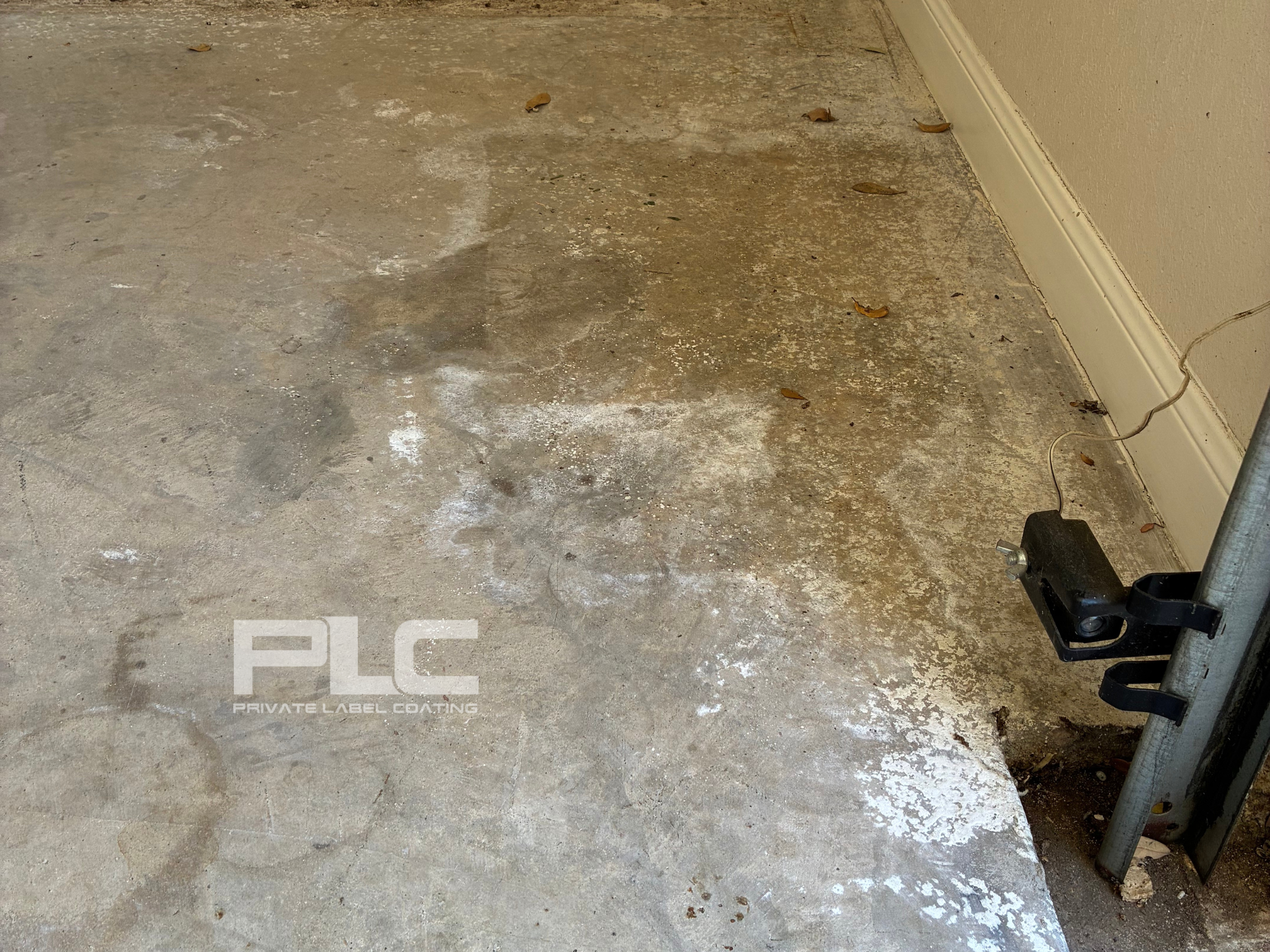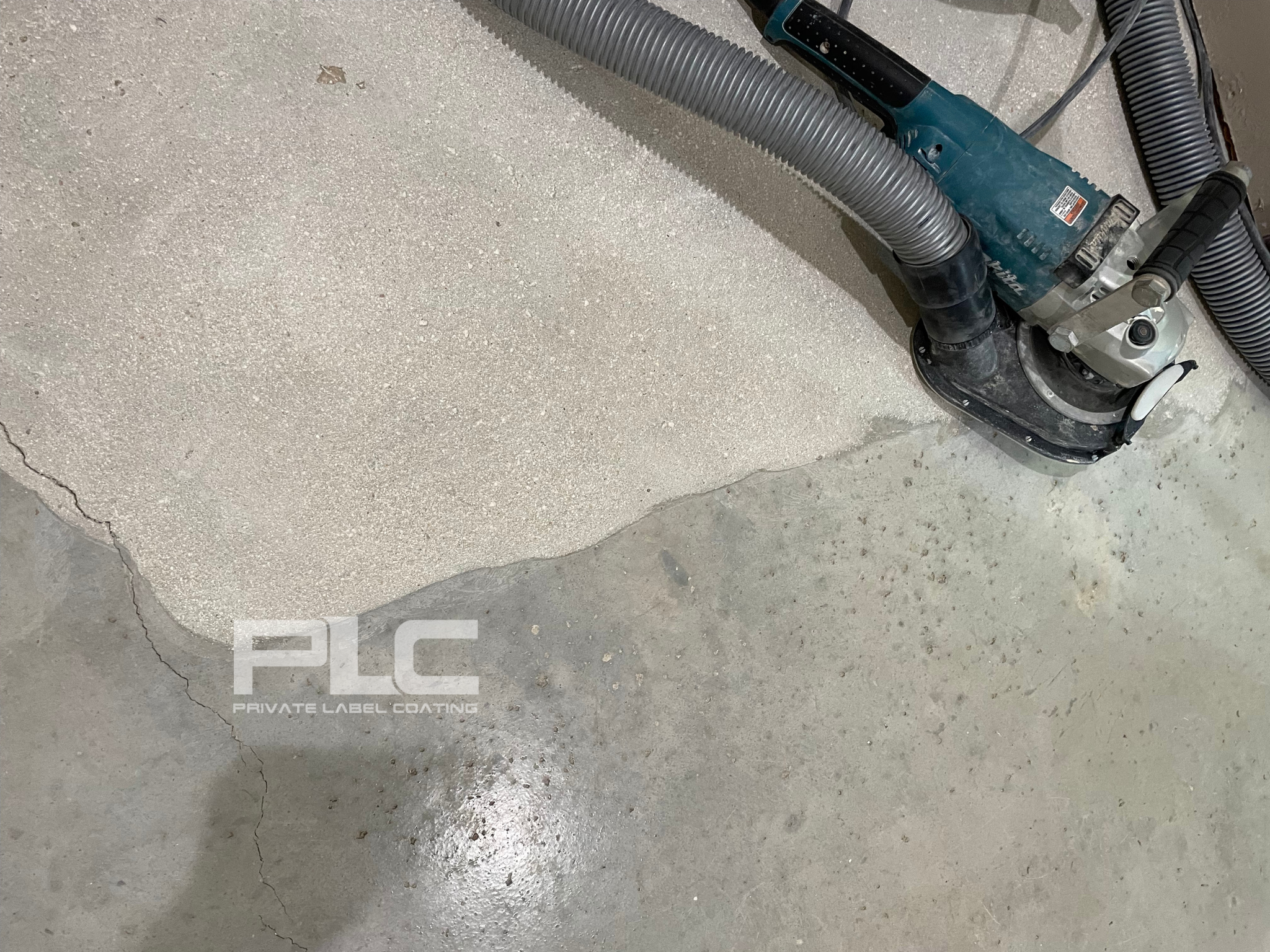At Private Label Coating (PLC), one of our core values is educating our clients and contractors about the science behind superior surface preparation. One of the most common (and often misunderstood) issues that can compromise the longevity of a concrete coating system is something called efflorescence.
So let’s break it down—what it is, how it forms, and why it matters for your floor.
What Is Efflorescence?
Efflorescence is a white, chalky or powdery residue that appears on the surface of concrete, brick, or masonry. It may look like dust or even dried salt deposits — and that’s exactly what it is: mineral salts that have migrated through the concrete slab and crystallized on the surface.
How Does Efflorescence Occur?
Efflorescence is the result of three key factors coming together:
- Water-soluble salts within the concrete slab or substrate
- Moisture movement through the concrete (from beneath or above)
- Evaporation at the surface, which leaves those salts behind as the water exits
Here’s the process in simple terms:
- Moisture enters the concrete (usually from below the slab or from humidity)
- That moisture dissolves naturally occurring salts and minerals inside the concrete
- As the water migrates upward, it carries those salts to the surface
- When the water evaporates, it leaves behind a visible white residue — efflorescence
Where Is Efflorescence Most Common?
- Garage floors
- Basements
- Outdoor patios
- Driveways
- New concrete pours (within the first year)
It’s especially common in areas with:
- High humidity
- Poor drainage
- Improper vapor barriers under the slab
Why Efflorescence Matters in Coating Systems
Efflorescence isn’t just cosmetic — it can cause major adhesion issues with epoxy, polyaspartic, and other resinous coatings.
Here’s what can happen if not addressed:
- Coating failure or peeling
- Delamination from the substrate
- Bubbles or pinholes in the coating
- Shortened lifespan of the floor system
Even worse, coating over efflorescence without resolving the underlying moisture issues will often trap moisture, accelerating future damage.
How We Prevent and Treat Efflorescence at PLC
At Private Label Coating, we’ve developed strict protocols for surface prep that address efflorescence before a single drop of coating goes down:
- Moisture testing before installation (calcium chloride or RH tests)
- Mechanical surface profiling (grinding or shot blasting) to remove surface contaminants
- Efflorescence-specific cleaners or etching agents when necessary
- Vapor barrier primers or moisture mitigation systems, if warranted
- Proper cure time for new slabs before coating
We also educate contractors and customers on things like drainage, ventilation, and post-install care to prevent recurrence.
Is Efflorescence a One-Time Problem?
Not always — efflorescence can come back, especially if the root cause (moisture intrusion) isn’t resolved. That’s why professional prep and coating systems must account for moisture movement before and after installation.
Final Thoughts from the PLC Team
Efflorescence is common — but that doesn’t mean it should be ignored. At PLC, we believe that education and preparation are what set apart a good coating job from a great one. Our goal is to protect your investment by delivering coatings that not only look amazing — but last for years to come.
Whether you’re a homeowner looking to protect your garage floor or a contractor seeking next-level training and coating systems, we’re here to help you get it done right.al program and a discount on your first maintenance service.
Contact Us Today
Bryan: (830) 928-1945
bryan.fuelexpert@gmail.com


